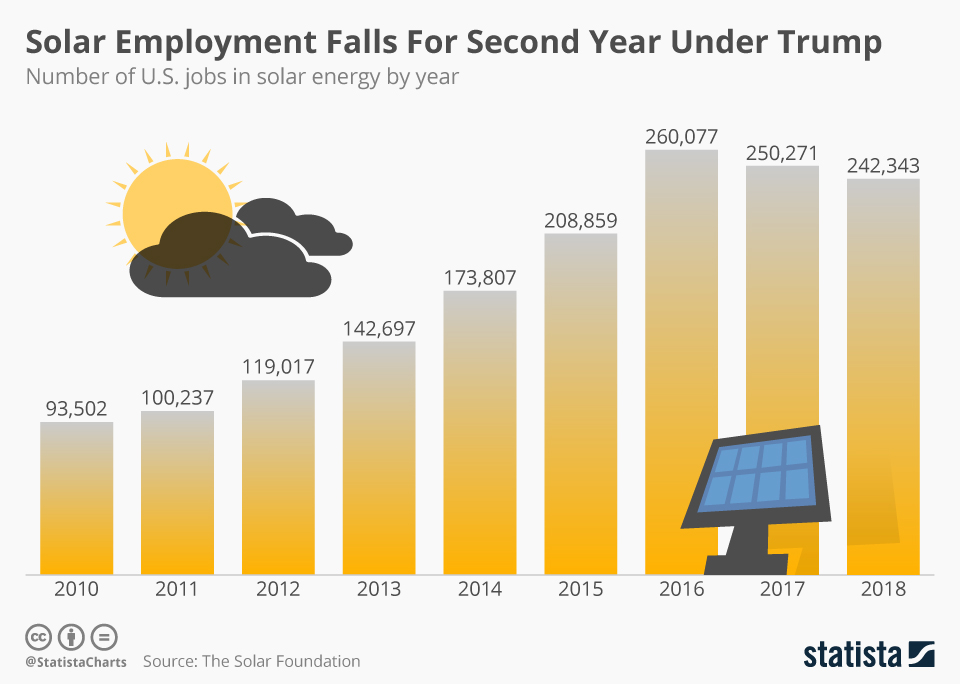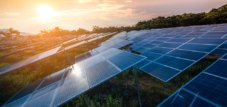After years of growth, the number of solar jobs in the U.S. has now fallen for the second year in a row. That's according to the National Solar Census released by the Solar Foundation earlier this week. In 2018, there were 242,343 solar employees in the U.S., a decrease of 3.2 percent from the previous year. The industry also shrank by 3.8 percent in 2017.
Why is this happening? The foundation says the two-year decline is due to uncertainty over the outcome of the Section 201 trade case over solar modules and cells. That made it difficult for U.S. solar project developers to award prices, bits and contracts for future projects. On January 22, 2018, the Trump administration also imposed tariffs on crystalline silicon modules and cells at 30 percent, with an annual reduction of 5 percentage points through 2022. This led to higher hardware costs and delayed job growth.
The current decline is particularly worrying because a long list of scientific reports have called for immediate action to reduce carbon emissions. Even though things are turbulent under the Trump administration, brighter days lie ahead for U.S. solar energy. The report claims that the employment situation will improve due to a backlog of major projects and new policy incentives in key US states. This is expected to lead to a further increase in employment, with the overall forecast increasing by 7 percent to reach 259,400 this year.
After years of growth, in the USA the number of jobs in solar has now fallen for the second year running. That's according to the National Solar Census which was released by the Solar Foundation earlier this week. 242,343 people were employed in solar across the US in 2018 and that represents a 3.2 percent decline in the previous year. The industry also contracted 3.8 percent in 2017.
Why is that occurring? The Foundation says the two years of decline can be attributed to uncertainty surrounding the outcome of the Section 201 trade case on solar modules and cells. That made it difficult for US solar project developers to price, bit and contract for future projects. On January 22, 2018, the Trump administration also imposed tariffs on crystalline silicon modules and cells at 30 percent with a 5 percentage point reduction per year through 2022. That brought about higher costs for hardware and stalled growth in employment.
The current contraction is especially worrying given that a long list of scientific reports has been called for immediate action to reduce CO2 emissions. Even though things are turbulent under the Trump administration, brighter days do lie ahead for US solar energy. The report claims that the job situation will improve due to a backlog of utility-scale projects and new policy incentives in key US states. That is expected to bring about an increase in jobs once more with the total forecast to go up 7 percent and reach 259,400 this year.
You will find more infographics at Statista


